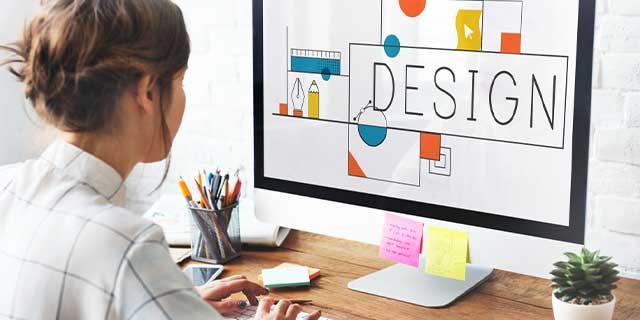
What is conceptualized design? And how to wrap your mind around ideation
When you have an idea, have you thought about designing that idea? For most people, such a person with that idea is just babbling. However, visual communication requires putting meaning into something that is abstract. Therefore, you have to find a dependable way to convey that idea to create a design. Transforming that idea into something visually relatable requires a process, which is what we call conceptualized design.
Since conceptualization transpires within the mind, it is possible to overlook such an idea. However, conceptual design remains the basis that a decent design stands on. Remarkably, even dazzling designs can be unsuccessful if it doesn’t have a solid support. Considering that, we will enlighten you on what conceptual design entails and how you can apply it to any project you want to undertake.
Definition of Conceptual Design
It represent the backbone for setting up the fundamental idea behind any design and planning how to express it graphically. It is similar to the word “concept art” that represents an illustration that expresses the artist’s vision of how a final product may look or take form.
Likewise, conceptual design takes place in the early design process and requires tools such as paper and pen. Basically, the core word in conceptual design is “concept,” which refers to the idea and purpose behind any design. In contrast to execution, it represents the execution and shape a particular design eventually takes.
The concept represents the plan, whereas the implementation is the action you took. In most situations, designs are evaluated based on quality in areas such as concept and execution. Therefore, someone may ask what your design is saying and how properly it transmits that message.
Importantly, you can’t have a concept without execution and vice-versa. A poorly implemented design with a good concept can mess up the message in an unappealing manner. On the other hand, a bad concept with excellent execution will not provide the required output needed for an idea.
Why conceptualized design?
There is a famous saying that abuse is inevitable when the purpose of a thing isn’t known. Therefore, what is the objective of conceptual design? Primarily, it entails giving visual expression to an idea. Focusing on this purpose, we can conclude that conceptual design has three essential objectives. Without further ado, let’s look at these objectives.
To create a logical foundation
Imaginative disciplines contain the propensity to be controlled by gut feeling and emotion. It doesn’t matter if it represents a logo or software; a design is meant to fulfill a particular purpose – it must convey information or express something about a brand. Therefore, conceptualized design is the foundation for any artwork concerning questions about the how and why of something.
To produce a design language
Conceptualization is essentially about an idea, and designers help bridge that gap between visual characteristics and abstract thought. Design languages use design elements to converse and induce meaning to an idea. Therefore, the design phase lays the groundwork or foundation for a meaningful design.
To attain originality
Another objective or goal of conceptual design is to attain originality. According to a popular saying, “nothing is unique.” Well, the statement is right to a certain extent. While the practice of design looks old, designers are coming up with different innovation that has never existed in history. Get a free promo code on 1xBet for sports betting. Promo codes are a convenient incentive tool in bookmakers. With their help, new customers can receive significant preferences to the main bonuses. 1xBet promo code is "GIFT888". With this code, you can be sure you’re getting the best possible welcome bonus 100% up to 130$. 1xBet is an online gambling company licensed under the Curaçao eGaming license. 1xBet bonus code is required to claim any of the sportsbook’s current welcome offers in legal.
Processes of Conceptual Design
With a basic understanding of the definition of conceptual design and its objectives, it is essential to look at how you can get it done. To make it easier, we have broken the approaches to conceptual design into four phases or steps. While these steps are essential, completing them in a particular order is unnecessary.
It doesn’t matter the order you choose; you must go through the steps below to understand the following approach. With that sorted out, let’s look at the approaches or processes to conceptual design.
Definition
The first step is to define the reason for any project. What is the Design about? What does it intend to achieve, and how will it achieve that purpose? It can be tricky when you want to define the problem because difficulties can be complicated. A problem can represent an indication of a deeper issue in most situations, which means you have to move above what you see at the surface and find the primary cause.
One technique to deal with the main issue is to use the “Five Why” principle. It involves
presenting a challenge and asking why, pending when you understand the main issue perfectly. If you don’t get the main problem root, it will affect your design resolution. Therefore, your design solution is based on you answering the question behind your problem.
Research
The place of research cannot be underemphasized. Every design must occupy a space in reality. Therefore, a design concept has to be founded firmly in research. It can begin with receiving information about the client’s brand history, mission, and personality. Furthermore, you have to research the people who interrelate with the design. It will require you to conduct targeted audience research.
In addition, it can extend to examining related designs from rivals in the industry. You can go a step ahead by researching other designers work to gather inspiration or material. With this, you can push your concept and develop unique designs that can be a masterpiece.
Verbal Ideation
Normally, concepts represent thoughts – these are words scattered in our minds. Therefore, to transform a concept into a significant thing, you must pull these scattered words out. It is a process known as brainstorming, where you explain your concept in a verbal format. It can be as simple as stating the problem as we talked about in the definition process. Here, you enlist all the potential solutions to the problem.
Nowadays, you can use different word-based methods, including a free association or mind-mapping, to achieve this brainstorming. In both techniques, you can begin with a phrase or word and write any words related to this design that comes to your mind. You can continue this pending when you have a comprehensive list. Importantly, you can set a timeframe for your brainstorming period to avoid overthinking. The essence of generating these words is to help build words that can better explain your concept.
Visual Ideation
A concept must translate from abstract to visual design at specific points. Designers usually use sketching to accomplish this phase. Another method is to generate thumbnails representing sketches of the design that fit several pages. Like verbal ideation or brainstorming, the objective in visual ideation is to sketch the best design for that idea.
In addition, you can also set up a timeframe for your visual ideation. The goal is to pin every graphic idea that comes to your mind or interpret the concept in sketches. This stage is where the actual test of your idea comes to play. Immediately you have some sketches, you can enhance them into something bigger. It will provide a better presentable version that enables you to collect feedback in a better way.
Conceptualized Design – Getting Started today
After going through the conceptual design process, you need to execute the concept. The execution phase is as crucial as the other process because that is where you can see the visual effect in the real world.
The execution phase requires software, which allows you to choose the working form of the design. It could be a mockup or prototype. For instance, if the client approves the design and other stakeholders agree, you can move to the next stage – crafting the final concept version. However, if it wasn’t approved, you must revisit the conceptual design.
Conceptualized design represent the foundation for any design task or project. Therefore, you need to get everything right. It can be challenging to create a concept and discouraging when it doesn’t fit the requirement. However, following a good design process is essential, as we have clarified in this article. Importantly, you need a skilled designer to ensure your conceptual design becomes what you have envisioned.




